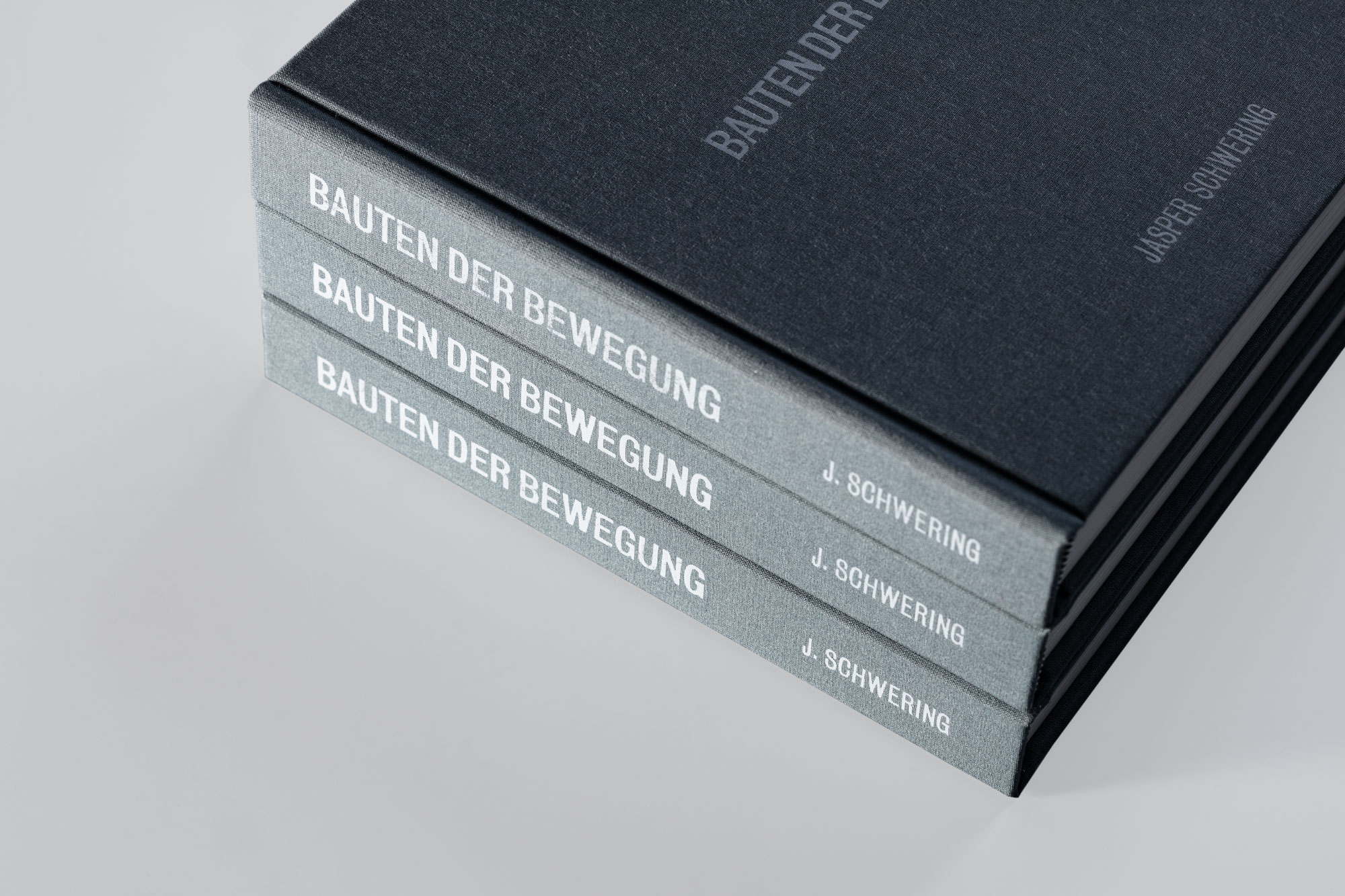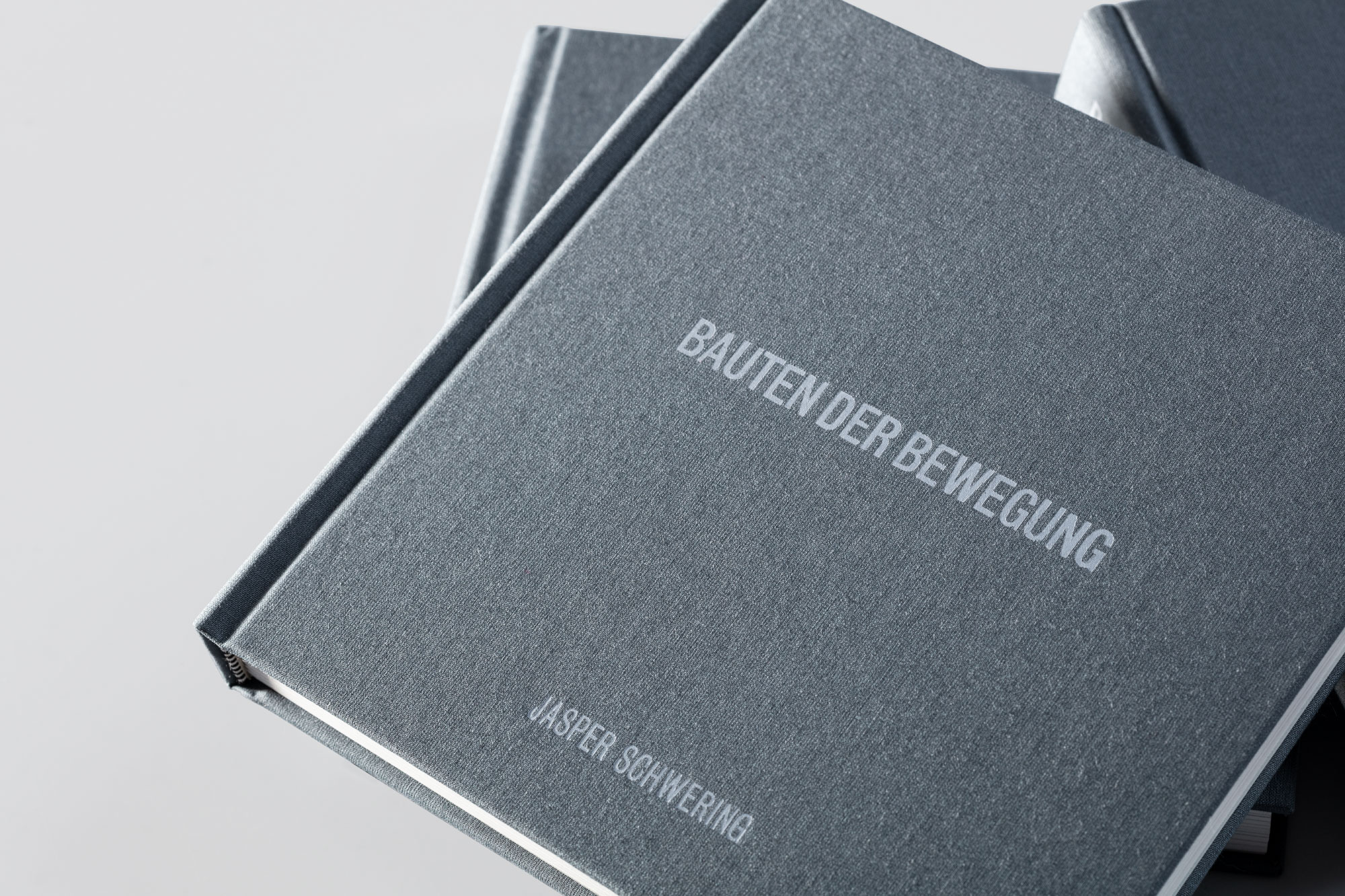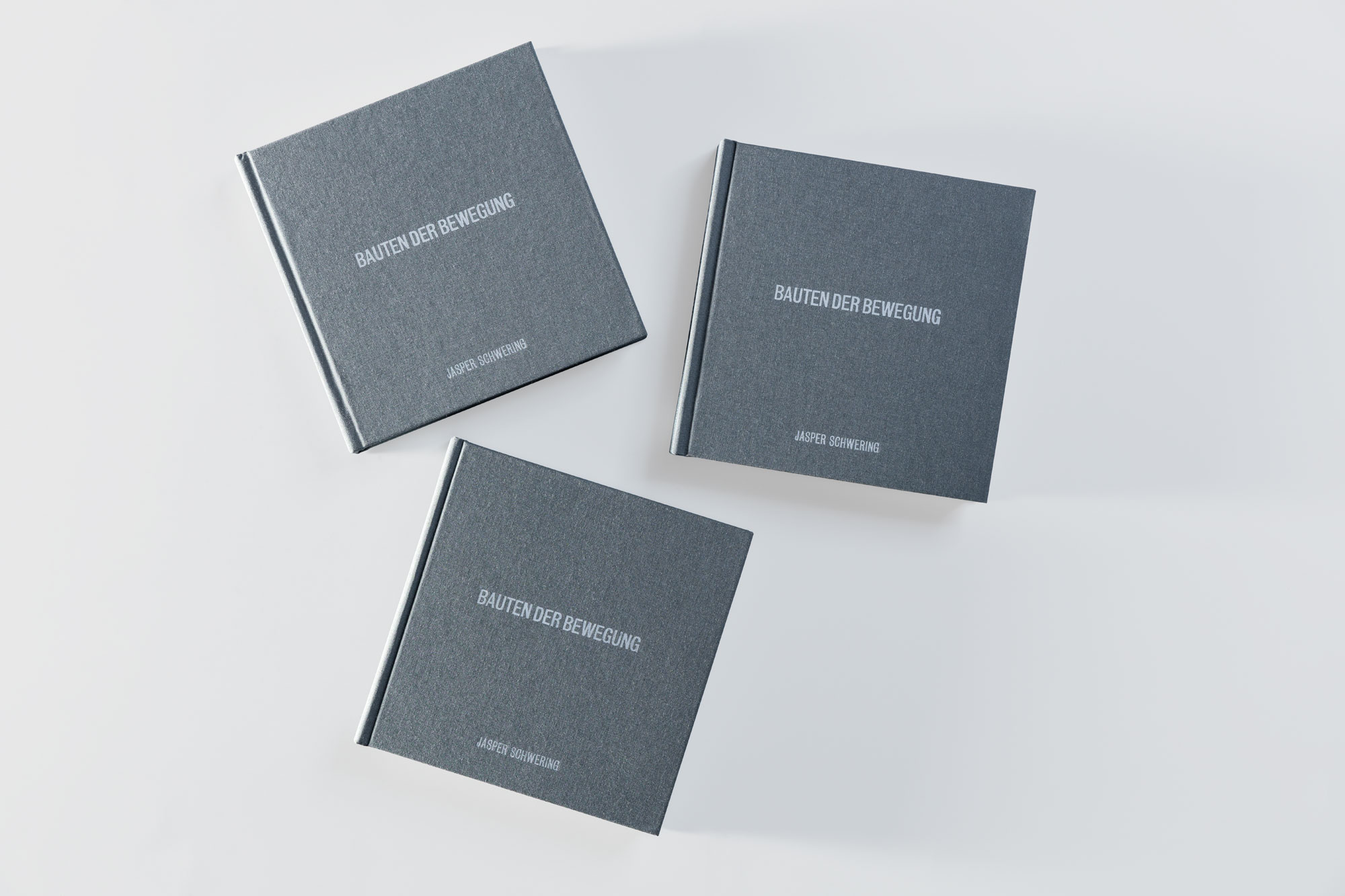Bauten der Bewegung
2021
DISCLAIMER: The images below only feature a selection of an extensive project that features many more photographs. A complete PDF can be requested via Email.
Bauten der Bewegung explores the current use of selected buildings in Munich that were of significant importance to the execution of the Third Reich regime and dissemination of Nazism in Germany.
Named by Hitler as ‘Hauptstadt der Bewegung’, meaning ‘Capital of Movement’, the city of Munich held a superior place in the maintenance of Hitler‘s ideology compared to other German cities. For the duration of the Nazi regime, many major head offices for the NSDAP — or Nazi Party — were situated there, as well as numerous Nazi officials and Hitler himself owning private residences there. In addition to its administrative importance, many of the buildings the Nazis constructed or occupied in Munich were valuable centres for culture and the arts.
Having lived in Munich for the greatest part of my life, I feel a resolute personal investment in documenting these buildings that I grew up around with the knowledge of their past. I have always felt a strong pull to learn about how their current occupants reconcile the infamous and sensitive historical narratives of such buildings. This project has been a constant learning process; allowing me to find out about the histories and the former uses of the spaces that I was visiting, but also about the people who live and use these buildings today.
Starting the work in 2020 — one hundred years after Hitler founded the NSDAP — seemed to be the right moment to engage with this part of history. At the centenary of an event which changed the course of history, it allowed me to consider not only how such a catastrophe happened, but how Nazism was upheld within German society’s social and administrative spaces. The regenerative shifts in both the use of these spaces and German culture which have taken place over the last ninety years is something I felt had to be recorded.
Named Bauten Der Bewegung, my project alludes to a 1942 book of the same name which documented the architecture of the Third Reich. In contrast, my work seeks not to promote these buildings as pillars of Nazism; but examine the contemporary functions of such spaces with a history that should neither be glorified, nor ignored. I would like this work to serve as part of the so-called ‘Erinnerungskultur’, literally meaning ‘Culture of Remembrance’. Despite its translation, Erinnerungskultur is not solely about remembering our history; it is an active relationship and interaction with the past which allows us to mourn, educate and progress. I would like to use this work to reaffirm that this era of our history should not be forgotten; instead using these cultural displays as tools for information.
As well as exploring how these buildings function in our contemporary urban environment, I want to uncover both the stories that these structures have held within their walls for over 90 years, and the stories that their current inhabitants have to tell now.

Ettstraße Reichspolizei
With its rear doors opening onto Munich’s most famous cathedral, the Frauenkirche, Ettstraße Police Station is situated in the very centre of the city. From the 1920s, as Nazism was beginning to spread throughout Germany, this station earned the name ‘Mörderzentrale’, literally translating as ‘murder headquarters’. The cause of such a morbid nickname can be attributed to Ernst Pöhner, who was station president from 1919 to 1921. Pöhner’s abuse of power allowed him to transform Munich into a focal point for right-wing extremism and earned him a specific reference in Hitler’s Mein Kampf. Pöhner’s support of the Führer led him to be a central figure in the organisation of the Munich Putsch in 1923, during which Hitler named him Prime Minister of Bavaria. He could never live up to this title, however, as the failure of the Putsch led to his — and Hitler‘s — arrest.
Despite Pöhner’s arrest, his violent legacy was upheld under the later president of the station, Heinrich Himmler. From this point on, Ettstraße Police Station was renowned as a place of terror throughout Germany. Himmler strengthened the ties between the Police, the Schutzstaffel (SS) and Sturmabteilung (SA) to relentlessly and viciously oppress all enemies of the state. In March 1933 alone there were 5000 political arrests in Munich, and in the same month Himmler used his presidency at the Ettstraße Police Station to sanction the establishment of the first concentration camp in Dachau, just outside Munich. Thereafter, Himmler continued to expand his powers of enforcement beyond the SS; becoming Chief of German police, Minister for the Interior, Reichsleiter — second highest office of the Nazi party, succeeded only by Hitler himself — and Commander of the Replacement Army. He was the prime architect of the Holocaust, and responsible for the deaths of eleven to fourteen million people.
Over 90 years later, this building continues to function as the Munich Police Headquarters.







Führerbau
Immediately following Hitler’s election to power as Chancellor of the German Reich in 1933, planning on the two buildings which housed the administrative headquarters for the NSDAP began. Designed by Nazi architect Paul-Ludwig Troost, the Führerbau served as a representative building for Hitler as Führer and was populated by top Nazi administrators, including Martin Bormann — head of the Nazi Party Chancellory and Hitler’s private secretary. The identical neighbouring building, named the Verwaltungsbau, was used for the general administration and upkeep of the NSDAP and held the members register, the party archive and parts of its treasury. Visually indistinguishable, both buildings served as architectural benchmarks for any further construction under the Third Reich. To connect the two buildings with Königsplatz and the adjacent Ehrentempel (Honour Temples), all trees and houses which once stood there were felled to clear the space. With nothing standing in the way of these buildings, the authority of this architectural complex was a symbol for the power and magnitude of Hitler’s party.
After the Nazi party was dissolved following the end of the Second World War, the Führerbau was repurposed in line with efforts to de-nazify Germany. In April 1948, the Führerbau became America House Munich, which aimed to provide German citizens with an opportunity to learn more about American culture and politics. Visitors could enjoy things like books, newspapers, concerts and language courses for free. In 1949, America House was receiving up to 25,000 visitors per week.
From 1957, the building was inhabited by the Hochschule für Musik und Theater (HMTM), Munich’s conservatory for music and theatre, and has been its occupant ever since.





Franz-Eher Publishing
Founded in 1887, but acquired by the NSDAP in 1920, Franz Eher Verlag (Franz Eher Publishing) was the principal publishing house for the Nazi party and held its offices on Thierschstraße 15, in the centre of Munich. As well as popular newspapers like Völkische Beobachter (Ethnic Observer) and official Nazi propaganda, this publisher was also responsible for printing and distributing Hitler’s Mein Kampf, which sold millions of copies. With the growing popularity of the NSDAP, and therefore the requirements of the Franz Eher Verlag, the party expanded the business into the neighbouring buildings, occupying numbers 11 to 17 on Thierschstraße. By 1942, this publishing house owned up to 80 percent of the German Press, and was responsible for the distribution of a large amount of Nazi newspapers. Hitler himself was its only shareholder and personally profited from the success of the publishing house. With the popularity of Mein Kampf and by avoiding tax payments, the Franz Eher Verlag quickly became a large source of the Führer’s income. With its earnings, Hitler financed the purchases of private mansions and vehicles, as well funding propaganda and political campaigns. The Führer also saw large sums of money being donated to him by private individuals. Notorious donators included Fritz Thyssen, a German industrialist who was consequently appointed to the German Economic Council by Hitler, and American car manufacturer Henry Ford; both of whom sent large sums of money straight to the Führer. Another notable financial contributor was Helene Bechstein — wife of Edwin Bechstein, who owned the C. Bechstein piano factory. Today, the Bechstein name can still be seen frequently in these buildings; though now only at the keen fingers of pianists who visit the piano shop here.







Königsplatz
Since the foundation of the Party in the 1920s, the NSDAP expressed clear interest in Königsplatz. Built in the popular style of European Neoclassicism in the early 19th Century, the vast expanses of space offered by the square would allow the Nazis to conduct their mass rallies and overt assertions of dominance. In 1933, the entire square was redesigned to become the epicentre of the Hauptstadt der Bewegung. Such a palatial complex served as an imposing forum for the NSDAP throughout the war and was used for celebrations, speeches, book burnings and intimidating displays of power. All through traffic was forbidden and 22,000 granite paving stones were laid to cover the entire square. Each slab was precisely one square metre, purporting the exact direction and length of each marching step that SS officers and martial deployments would take in their rallies. Additionally, the houses and trees on the East side of the square were demolished and replaced by structures which upheld Nazi sentiments in their stature. These buildings were the presumptuously named Ehrentempel (Honour Temples), and two identical monumental Party-buildings: the Führerbau and the Verwaltungsbau. The two Ehrentempel commemorated the sixteen Blutzeugen der Bewegung (Martyrs of the Movement) who died in 1923 during the Munich Putsch. From 1935, their bodies were interred in the Ehrentempel and commemorated by an eternal flame, with each temple guarded by two armed SS officers at all times. Two years after the end of the war, the Ehrentempel were destroyed by American troops, leaving only the base of their structures behind. Rather than the last remains being removed, nature has been given full control over the remnants, somewhat disguising them and their past. After the demise of the Nazis, Königsplatz became a municipal parking lot, with the space only being restored as a city square in the late 1980s. Since then, the square has been a place for social gatherings and now hosts open air concerts and cinema events in the summer.





Hofbräuhaus
In February 1920 at the Hofbräuhaus in Munich, Hitler announced the formation of the Nationalsozialistische Deutsche Arbeiterpartei (NSDAP, or Nazi Party) to an audience of over 2000 supporters. In his speech, he outlined a new party manifesto which expressed a clear foreign policy — including the rejection of the Treaty of Versailles and the systematic expulsion of Jews. One year later, a drunken punch-up at the beerhall led to the birth of the Sturmabteilung (SA); a lethal paramilitary unit that functioned as the Nazi party’s private assault division. Thereafter, this building became a place of pilgrimage for all National Socialists. From 1934, a yearly reunion took place to celebrate the foundation of the party, with Hitler heading the crowds of Alte Kämpfer (Old warriors).
Beerhalls and social spaces were frequented by Hitler in his plight for power and were seen as spaces to procure potential supporters. Here, surrounded by drunken men, he could easily sway the crowds with his powerful speeches and fraternisation. One such tavern that Hitler used as a political tool was the Bürgerbräukeller, another drinking hall in Munich. It was from here that the Munich Putsch started in 1923, and where the party celebrated their re-establishment in 1925, having been banned after the failed Putsch. This building was also the location in which Georg Elser made an assassination attempt against both Hitler and his notorious entourage. However, Hitler finished his speech unusually early on that day and he, Heinrich Himmler, Martin Bormann, Rudolf Heß and other top Nazi officials left the building precisely 13 minutes before Elser’s bomb exploded and killed 8 people.
The Bürgerbräukeller was demolished in 1979, with the Gasteig cultural centre taking its place. Today, the Hofbräuhaus continues to function as a place for social gatherings, food and drink.





Judenhaus
With Heinrich Himmler as Reichsführer, the oppression and execution of Jewish people grew infinitely worse. Anti-Semitism thereafter underpinned Nazism, and thus German culture. One was not considered a good German if they did not partake in efforts to erase their Jewish family members, friends, and neighbours. One of the most prominent culminations of this anti-Semitic sentiment came on the 9th of November 1938, known as Kristallnacht. That night, civilians and members of the SA unleashed a series of targeted violent attacks on Jewish shops, homes and synagogues. With a dedicated administrative department, the Arisierungstelle (Department for Aryanisation) was responsible for the senseless eviction and removal of Jewish citizens from their homes. Between 1935 to 1939, anti-Jewish measures became more severe and were written into Nazi law. Jewish families were obliged to leave their ‘Aryan’ homes and thus forced into Judenhäuser, or Jew Houses, and lived in appalling conditions. The focus of the Judenhäuser were to physically segregate the living quarters of Jewish people and other citizens, with the Nazis forcing as many families into one building as possible. For many German Jewish people, these were their last residences before they were deported to concentration camps.
One such residence once occupied the building pictured here. At the time, the owner of this building was Therese Mohr, who was of Jewish heritage and thus had her property forcefully converted into a Judenhaus. It was not long before this building was overhauled and left empty again, after its inhabitants had been deported. From September 1942 the property was offered to German citizens, and the address register recorded their names again.
Today people buy their groceries here, and no trace of this building’s history has been left behind.





Thierschstraße 41
In July 1936, the city council attached a brass plate on the building of Thierschstraße 41, which stated: “From the 1st of May 1920 to the 5th of October 1929 Adolf Hitler lived in this house.”
Of these years, the Völkische Beobachter newspaper commented: “For almost ten years the Führer lived here. These were the years of the most difficult struggles and fights. This is where his followers gathered, new plans were designed, appeals and decisions were made.”
Despite the plate disappearing in 1945, a sinister atmosphere still seems to surround the building. In the urban landscape of Munich today, this building is unremarkable, camouflaged by the other buildings on this street. The ever-present St Lukas church seems to watch over the area, warding off any violence that did, or could, ever occur here.





Prinzregentenplatz 16
In 1929, Hitler moved from Tierschstraße 41 into a luxurious second floor apartment at Prinzregentenplatz 16, just across the street from the Nazi playhouse that later became the Theater des Volkes. This opulent new residence was key in confirming Hitler’s status as a politician during his plight for power in the late twenties and early thirties. In 1936, the entire building was bought — financed entirely by the NSDAP — and many SS officials moved into the flats which neighboured their Führer. When the German forces in Bavaria surrendered to the American army, troops found twelve first-edition signed copies of Mein Kampf locked in a safe, which was concealed by stolen paintings. After Hitler’s suicide, his entire fortune and assets were requisitioned by the Bavarian government; including the building at Prinzregentenplatz, his housing and bunker complex at Obersalzberg known as The Eagles Nest, and all ownership, author, and printing rights for Mein Kampf.
Since the entire building was owned by the Bavarian State Government from 1945, it was put to use in 1949 and reopened as a police station in an effort to avoid it becoming a pilgrimage site for Neo-Nazis. Today the building remains a part of the state police force, called the Polizeiinspektion 22.





Haus der Deutschen Kunst
The Nazis envisaged the development of a young, strong, ‘Aryan race’, who would march Germany towards its future as a superior world nation. The arts featured prominently in Hitler’s plans to achieve this, and as the Hauptstadt der Bewegung, Munich became the designated focal point for arts and culture for all of Germany. The space for the structure, built on the southern tip of the Englischer Garten, was donated by the Bavarian government. The project itself was financed and aided by heavy industry; the state railway transported the construction materials free of charge, and the remains of the build was supported by pioneers of German manufacturing like Siemens, Sachs, and Bosch to name but a few. Present at its inaugural opening in 1937 were the SA, the SS, the German Army, the Luftwaffe and the giants of German industry as well as the NSDAP leadership. The gallery’s first exhibition was titled Große Deutsche Kunstausstellung (The Great German Art Exhibition), and attracted over 400,000 visitors in its four month display. All the exhibitors were German and had to be specifically approved by the NSDAP. Less than five minutes away and with a clear view of the Haus Der Deutschen Kunst at Galeriestraße 4, the exhibition Entartete Kunst (Degenerate Art) opened the following day. With the aim of discrediting modern, abstract or art of Jewish origin, this was the last place that people could see many of these works in Germany before they were destroyed.
In 1946, the gallery was renamed Haus Der Kunst, and has since become an important venue for the exhibition of avant garde and contemporary art. While its proximity to the Englischer Garten has always been of interest to the visitors of the museum, in recent years this neighbourly relationship has introduced a new group of people to the Haus Der Kunst, or rather, its car park. Rather unusually, the Eisbach River — which flows just a few yards from the museum — features a man-made wave, which has become a kind of pilgrimage site for urban surfers. Every day, throughout the year, keen surfers flock to the museum’s car park to ride the wave, regularly observed by groups of perplexed tourists.







Borstei
Soon after the Borstei housing complex opened in 1931 its tenants became known as strong supporters of the NSDAP. While some sources claim that Bernhard Borst — the financier and constructor of the estate — didn’t sympathise with the Nazis, others are of the opinion that the architecture of these residences upheld the ideas and values of Germanic culture. Immediately after its initial opening the available flats were rented out to ‘superior’ citizens, many of whom were supporters or members of the NSDAP. Notorious party-members that lived here included Rudolf Heß and Gebhard Himmler. Both committed Nazis, Gebhard Himmler — brother of Heinrich Himmler — was a functionary and mechanical engineer for the party, while Heß held the title Stellvertreter des Führers (Deputy of the Führer). As well as fighting with Hitler in the Munich Putsch and helping him to write Mein Kampf, Heß wrote much of the Nazi legislation into law, including the 1935 Nuremberg Laws which stripped Jews of all their civil rights.
Today, this housing estate is largely populated by young families and retirees.










